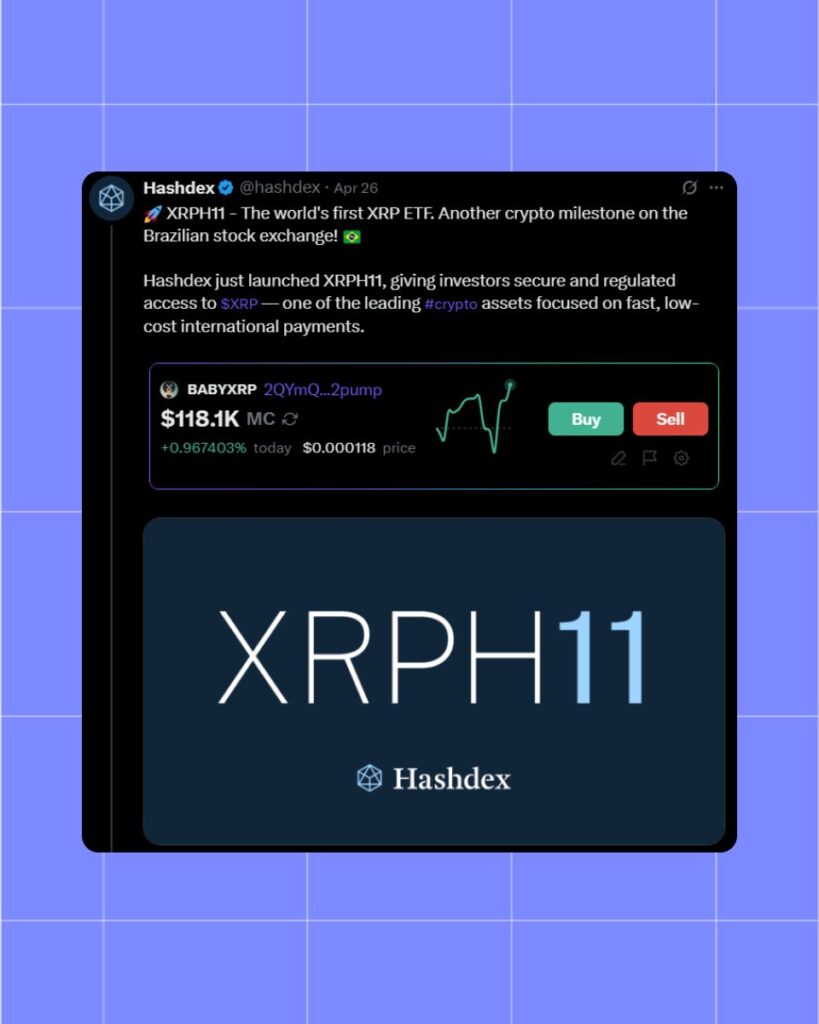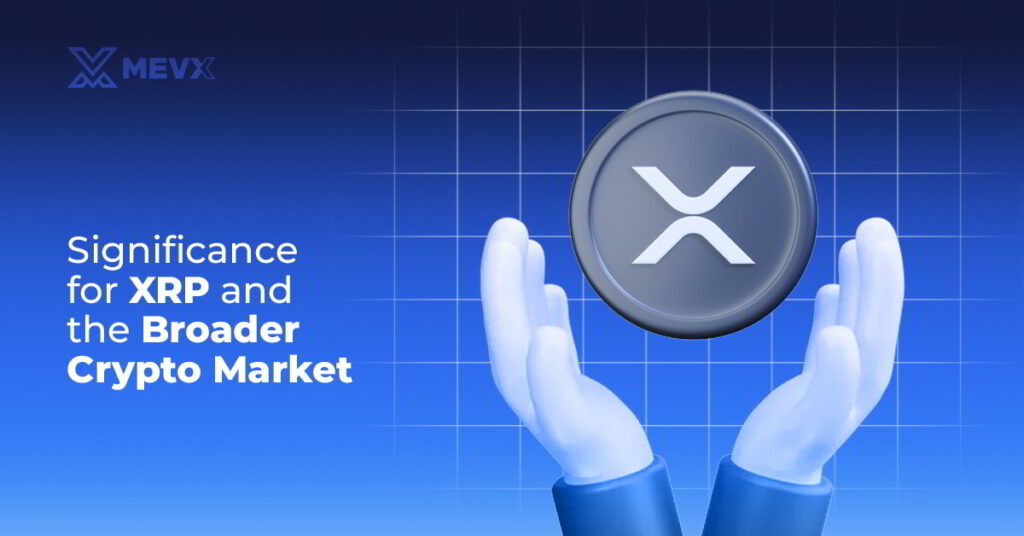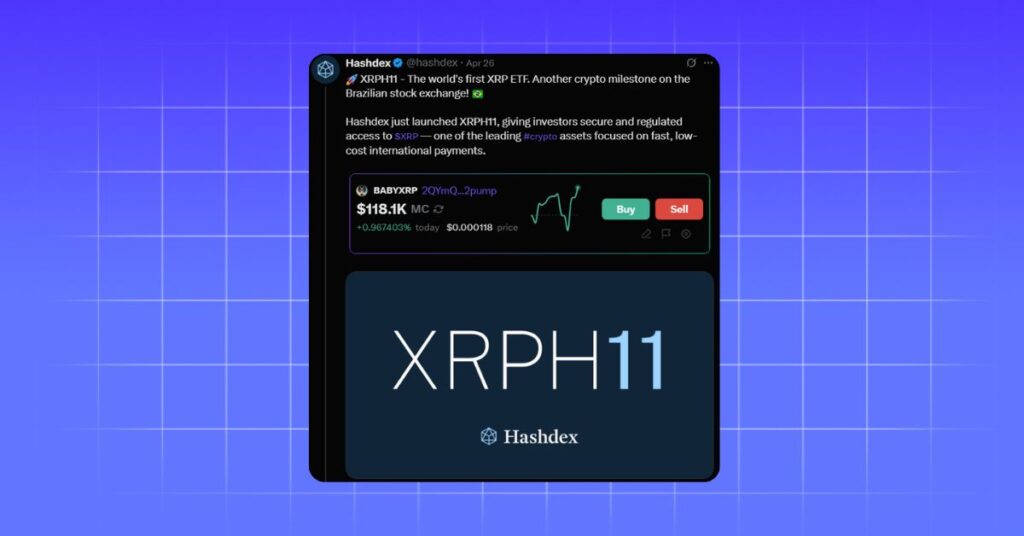Sao Paulo, Brazil – April 28, 2025 – In a landmark move for the global cryptocurrency investment landscape, Brazil has officially launched the world’s first spot Exchange – Traded Fund (ETF) directly tracking the price of XRP. Managed by Hashdex, a leading digital asset management firm, the fund provides Brazilian investors with regulated and streamlined access to the fourth-largest cryptocurrency by market capitalization. The groundbreaking product commenced trading on Brazil’s main stock exchange, B3 (Brasil, Bolsa, Balcão), signaling a significant step towards integrating major digital assets into traditional financial markets.

This development places Brazil at the forefront of cryptocurrency product innovation, particularly as other major economies, notably the United States, continue to grapple with the regulatory complexities surrounding spot ETFs for cryptocurrencies beyond Bitcoin.
Deep Dive into the Hashdex XRP ETF (XRPH11)
The newly launched investment vehicle, trading under the ticker symbol XRPH11, is meticulously designed to offer investors exposure that closely mirrors the performance of physical XRP. According to the fund’s prospectus and regulatory filings, the core investment strategy mandates that a minimum of 95% of the ETF’s net assets must be held directly in XRP. The remaining small percentage (up to 5%) can be allocated to cash, cash equivalents, or potentially index futures contracts, primarily for liquidity management and operational efficiency purposes.

To ensure accurate tracking and transparent pricing, the XRPH11 ETF benchmarks its performance against the Nasdaq XRP Reference Price Index (NQXRP). This index, administered by a globally recognized provider, aggregates real-time pricing data from multiple vetted cryptocurrency exchanges, calculating a robust reference rate designed to reflect the true market value of XRP. The use of such a reputable index adds a layer of credibility and reliability crucial for attracting both cautious individual investors and discerning institutional players.
Hashdex has structured the ETF to appeal to a wide investor base. It offers a viable pathway for retail investors in Brazil who seek exposure to XRP’s potential but may be hesitant to navigate the technicalities of cryptocurrency exchanges, wallet management, and private key security. Simultaneously, it presents a regulated, exchange-traded product that meets the due diligence requirements and operational frameworks of institutional investors, such as pension funds, family offices, and asset managers, who require investments to adhere to established financial market standards. The ETF wrapper provides familiarity, ease of access through traditional brokerage accounts, and the transparency associated with exchange-listed securities.
Significance for XRP and the Broader Crypto Market
The launch of a spot XRP ETF holds considerable significance for the digital asset itself. XRP, developed alongside the Ripple network, has long aimed to facilitate efficient cross-border payments and remittances. Despite its established position in the market, direct investment pathways through traditional finance have been limited. The XRPH11 ETF fundamentally alters this dynamic within the Brazilian market.

By offering XRP within a regulated ETF structure, Hashdex and Brazilian regulators are effectively lowering the barrier to entry and potentially enhancing the asset’s legitimacy in the eyes of mainstream finance. The ease of buying and selling shares of XRPH11 on the B3 exchange, just like any traditional stock, could stimulate increased demand, potentially improving liquidity and contributing to price discovery for XRP.
Furthermore, this development serves as an important indicator of growing maturity within the cryptocurrency market. The ability to structure, regulate, and list a spot ETF for a major altcoin like XRP demonstrates progress in building the infrastructure needed to connect the digital asset economy with the established global financial system.
Brazil’s Progressive Stance vs. US Regulatory Caution
The successful launch of XRPH11 highlights Brazil’s increasingly progressive and pragmatic approach to regulating digital asset investment products. While the country maintains robust oversight, regulators appear willing to approve innovative products that meet their criteria, allowing investors access to new asset classes within a controlled environment. Hashdex, having previously launched other crypto-related ETPs in Brazil, has built a track record that likely contributed to the smooth approval of this first-of-its-kind XRP fund.
This contrasts sharply with the situation in the United States. Following a protracted battle, the U.S. Securities and Exchange Commission (SEC) approved several spot Bitcoin ETFs in January 2024. However, the path for ETFs based on other cryptocurrencies, including XRP, remains obstructed. A primary hurdle is the ongoing legal dispute between the SEC and Ripple Labs, the technology company closely associated with XRP. The SEC alleges that XRP constitutes an unregistered security, a claim Ripple contests. This regulatory uncertainty and litigation make the approval of a spot XRP ETF in the US highly unlikely in the near term.
This divergence underscores a fragmented global regulatory landscape for digital assets. While some jurisdictions like Brazil are moving forward, others are adopting a more cautious or even restrictive stance, creating disparities in market access and product availability for investors worldwide.
Investor Appetite and Market Projections
The demand for regulated XRP investment products is not merely theoretical. Recent market data indicates substantial existing interest. As of April 18, 2025, the total Assets Under Management (AUM) across various global XRP-focused investment products (including ETPs, trusts, and other funds) reportedly stood at approximately $950 million USD. This figure signifies that nearly a billion dollars in capital has already flowed into vehicles providing investors with XRP exposure through regulated or semi-regulated channels.
Looking ahead, projections from influential financial institutions suggest this figure could grow significantly. Notably, analysts at JPMorgan have previously forecasted that the AUM for XRP-related investment products could potentially reach $8 billion USD in the coming years. While such projections are inherently speculative and depend on numerous factors – including XRP price performance, broader market sentiment, technological developments within the Ripple ecosystem, and crucially, further regulatory approvals globally – they underscore the perceived potential and growing interest from sophisticated market participants. The launch of XRPH11 in Brazil could act as a catalyst, potentially accelerating inflows if the product proves successful and investor confidence grows.
Analysis: Impact on Global XRP Adoption and Financial Integration
The launch of Brazil’s spot XRP ETF is more than just a regional milestone; it carries potential implications for the global adoption and integration of XRP into the mainstream financial system.

- Setting a Precedent: XRPH11 serves as a vital proof-of-concept. It demonstrates to regulators and financial institutions worldwide that a spot ETF for a major digital asset beyond Bitcoin is operationally feasible, can be effectively regulated, and can function within the existing infrastructure of a traditional stock exchange. This success story may encourage regulators in other markets, particularly those observing Brazil’s approach to fintech innovation, to consider similar applications more favorably.
- Bridging TradFi and Crypto: ETFs are familiar vehicles for traditional finance (TradFi) participants. By packaging XRP exposure into this widely understood and accepted format, Hashdex is effectively lowering the cognitive and operational barriers for institutional investors. This “TradFi wrapper” makes XRP more accessible and palatable for entities that might otherwise avoid direct interaction with crypto exchanges or custody solutions. It normalizes XRP as an investable asset class alongside stocks, bonds, and commodities.
- Enhancing Legitimacy and Trust: The rigorous process of approval and listing on a major exchange like B3 lends an air of legitimacy to XRP. It signals that the asset has met certain standards deemed acceptable by financial authorities, potentially mitigating some of the reputational risks or regulatory concerns that may have previously deterred conservative investors.
- Potential Catalyst for Broader Utility: While the ETF focuses on investment exposure, increased accessibility and mainstream acceptance could indirectly benefit the adoption of XRP’s underlying utility, particularly if it encourages more financial institutions to explore or integrate RippleNet’s payment solutions. Greater familiarity through investment products can sometimes precede deeper engagement with the technology itself.
- Pressuring Other Regulators? While unlikely to directly force the hand of bodies like the US SEC, Brazil’s move adds to the global conversation. If XRPH11 operates smoothly and attracts significant capital without causing market disruptions, it could subtly pressure regulators in more cautious jurisdictions to re-evaluate their stance, especially if they face demands from their own domestic investment communities for similar products.
In essence, the Brazilian XRP ETF acts as a critical stepping stone, potentially paving the way for XRP to transition from a purely crypto-native asset to one that is increasingly integrated and accepted within the global financial architecture.
A Watershed Moment for XRP Investment
The introduction of the Hashdex XRP ETF (XRPH11) on the B3 exchange marks a watershed moment for XRP investors and the cryptocurrency industry in Brazil. By providing the world’s first regulated spot ETF for XRP, Hashdex and Brazilian regulators have unlocked unprecedented access for a broad range of investors, potentially boosting liquidity, enhancing price discovery, and solidifying XRP’s position as a significant digital asset.
While regulatory challenges persist in key markets like the United States, Brazil’s pioneering initiative showcases a path forward for integrating digital assets into traditional finance through familiar and regulated structures. With substantial existing AUM in XRP products globally and optimistic long-term projections, the XRPH11 ETF is well-positioned to capture growing investor interest. Its launch is not just a victory for Hashdex and the Brazilian market but represents a crucial step in the ongoing evolution and maturation of the digital asset ecosystem, pushing XRP further into the mainstream financial conversation.

